#hori michiko
Text

Hori Michiko
41 notes
·
View notes
Text
Here is a tentative list of the girls nominated for best anime FL! I might start the first set (I’ll be doing it in sets of 50) today or tomorrow!
1. Nene Yashiro from Jibaku Shounen Hanako-kun
2. Suletta Mercury from Mobile Suit Gundam Witch from Mercury
3. Haruhi Suzumiya (from The Melancholy of Haruhi Suzumiya)
4. Katarina Claes (My Next Life as a Villainess)
5. Madoka Kaname from Puella Magi Madoka Magica
6. Yona from Yona of the Dawn/Akatsuki no Yona
7. Utena Tenjou from Revolutionary Girl Utena
8. Chiyo Sakura from Gekkan Shoujo Nozaki-kun
9. Clara - Welcome to Demon School Iruma-Kun
10. Michiko Milandra from Michiko and Hatchin
11. Kaguya - The Tale of the Princess Kaguya
12. Jolyne kujo (jojo's bizarre adventure)
13. Arietty - The Secret World of Arietty
14. Yuko Ichihara (xxx holic by clamp)
15. Anthy - Revolutionary Girl Utena
16. Vivy - Vivy: Fluorite Eye's Song
17. Ahiru/Duck from Princess Tutu
18. Touko Nanami - Bloom Into You
19. Akko - Little Witch Academia
20. Coco from Witch Hat Atelier
21. Tohru Honda - Fruits Basket
22. Usagi Tsukino, Sailor Moon
23. Ryuko Matoi (Kill la Kill)
24. Sakura - Cardcaptor Sakura
25. Hina - Weathering With You
26. Oscar (Rose of Versailles)
27. Sorawo - Otherside Picnic
28. Aurora - Sleepy Princess
29. Chihaya from Chihayafuru
30. Maka Albarn (Soul Eater)
31. Hana - Tokyo Godfathers
32. Shouko - A Silent Voice
33. Nobara - Jujutsu Kaisen
34. Chihiro - Spirited Away
35. Abby - Great Pretender
36. Mirai - Mirai no Mirai
37. Hana - Wolf Children
38. Anya - Spy x Family
39. Mizuho - Sonny Boy
40. Hiyori - Noragami
41. Emilia - Re:Zero
42. Casca - Berserk
43. Lucy Heartfilia, Fairy Tail
44. Ponyo - Ponyo
45. Yor Forger, Spy X Family
46. Nikaido, Dorohedoro
47. Noi, Dorohedoro
48. Nezuko, Demon Slayer
49. Kurisu Makise, Steins;Gate
50. Rachel Gardner, Angels of Death
51. Swindler, Akudama Drive
52. Power, Chainsaw Man
53. Emma, The Promised Neverland
54. Akane Tsunemori, Psycho Pass
55. Suzume Iwato, Suzume
56. Maquia, Maquia
57. Mima Kirigoe, Perfect Blue
58. Tome, Mob Psycho 100
59. Winry Rockbell, Fullmetal Alchemist
60. Riza Hawkeye, Fullmetal Alchemist
61. Celty, Durarara
62. Nina Fortner, Monster
63. Faye Valentine, Cowboy Bebop
64. Fuu, Samurai Champloo
65. Carole, Carole and Tuesday
66. Tuesday, Carole and Tuesday
67. Kayo Hinazuki, Erased
68. Koharu Hondomachi, ID Invaded
69. Alice, Pandora Hearts
70. Nausicaa
71. San, Princess Mononoke
72. Sophie Hatter, Howl’s Moving Castle
73. Sheeta, Castle in the Sky
74. Shizuku Tsukishima, Whisper of the Heart
75. Kiki, Kiki’s Delivery Service
76. Emilico, Shadows House
77. Mitsumi, Skip and Loafer
78. Ryougi Shiki, Garden of Sinners
79. Shizuku, My Little Monster
80. Violet Evergarden
81. Kaguya, Kaguya Sama
82. Touka, Tokyo Ghoul
83. Nana, Talentless Nana
84. Haruhi Fujioka, OHSHC
85. Sagiri, Hell’s Paradise
86. Re-L Mayer, Ergo Proxy
87. Eru, Hyouka
88. Chise, Ancient Magus Bride
89. Frieren, Sousou no Frieren
90. Maomao, Apothecary Diaries
91. Misaki, Maid Sama
92. Chiyuki, Death Parade
93. Falin Touden
94. Marcille
95. Hotaru, A Condition Called Love
96. Aya, Undead Girl Murder Farce
97. Yuki, A Sign of Affection
98. Hibari Ozora (Stop!! Hibari-kun!)
99. Saya Otonashi (Blood+)
100. Hitomi Kanzaki (The vision of Escaflowne)
101. Kokomine Cocona (Flip Flappers)
102. Misaki Mei (Another)
103. Chika Takami (Love Live! Sunshine!!)
104. Kaede Kayano (Assassination Classroom)
105. Sakura Minamoto (Zombie Land Saga)
106. Hitori Gotoh (Bocchi the Rock!)
107. Neko Musume (Gegege no Kitaro)
108. Chisato Nishikigi (Lycoris Recoil),
109. Yuki Cross, Vampire Knight
110. Guideau, The witch and the beast
111. Chateau, Love of Kill
112. Kaori, Your Lie in April
113. Shizuka Mikazuki, Zom 100
114. Kyouko Hori, Horimiya
115. Riko, Made in Abyss
116. Motoko Kusanagi, Ghost in the Shell
117. Kuroki Tomoko, WataMote
118. Holo, Spice and Wolf
119. Miyo, My Happy Marriage
120. Sawako, Kimi ni Todoke
121. Lucy, Cyberpunk Edgerunners
122. Kokomi Teruhashi, Disastrous Life of Saiki K
123. Asuka, NGE
124. Rei, NGE
125. Yumeko Jabami, Kakegarui
126. Retsuko, Aggretsuko
127. Haru, Beastars
128. Rae Taylor, I’m in love with the villainess
129. Haru, My Roommate is a Cat
130. Rea, Sankarea
131. Fujiko Mine, Lupin the Third
132. Revy, Black Lagoon
133. Sarasa Watanabe, Kageki Shoujo!!
134. Midori Asakusa, Keep your hands off Eizoken!
7 notes
·
View notes
Video
youtube

The anime adaptation of Shaman King Flowers, the sequel to the original Shaman King, has been announced to start airing in January 2024. A trailer dropped and the website was updated with new information.
Most of the staff from the 2021 remake will be returning, with the exception of Satohiko Sano, who is replaced by Mayuko Yamamoto as character designer for this upcoming anime.
Voice Cast:
Hana Asakura — Yoko Hikasa
Alumi Niumbirch — Sumire Uesaka
Yohane Asakura — Shun Horie
Gakko Ibuki — Michiko Kaiden
Tao Men — Romi Park
26 notes
·
View notes
Text
TV Anime "SHAMAN KING FLOWERS" - New Teaser Visual & PV
'SHAMAN KING' Sequel
This sequel anime is scheduled for January 2024 (Studio: Bridge)
youtube

CAST:
🔹Hana Asakura (CV: Yoko Hikasa)
🔹Amidamaru (CV: Katsuyuki Konishi)
🔹Alumi Niumbirch (CV: Sumire Uesaka)
🔹Yohane Asakura (CV: Shun Horie)
🔹Gakko Ibuki (CV: Michiko Kaiden)
🔹Tao Men (CV: Romi Park)

#シャーマンキング#anime news#anime trailer#anime series#shaman king#flowers#shaman king flowers#anime#anime illustration#anime and manga#Youtube
9 notes
·
View notes
Text

New profile picture on my fb page is the shadow and his waifu <3
Jin deserves love <3 so I made a nice picture with Michiko at her graduation: 3 (if you do not know how they were together read the fic)
Pd: I apologize if my English is not very understandable but I arrived almost 24 hours without sleep and well I am barely awake
7 notes
·
View notes
Text


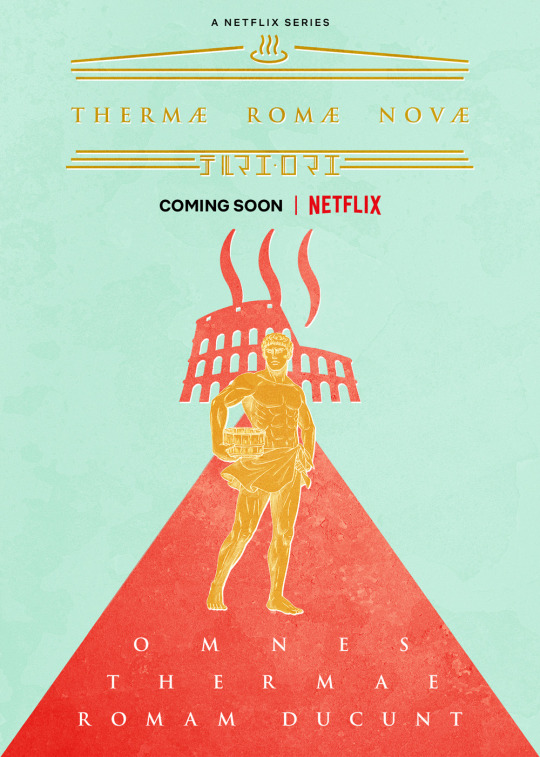

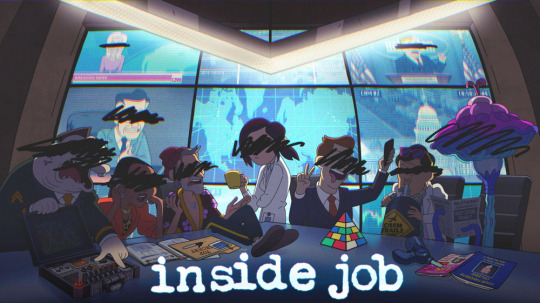
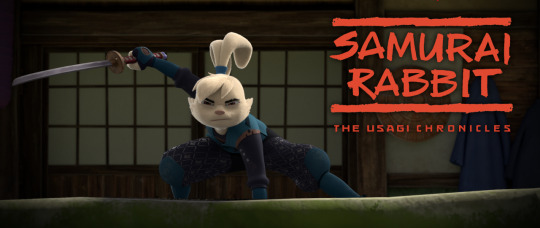
Netflix has a lot of future animated projects slated, all presented at the Annecy WIP sessions
Super Crooks is Netflix's anime makeover of the story by comic-book legend Mark Millar. Director Motonobu Hori and Netflix Anime Producer Rui Kyo presented a first-look at the series, which follows small-time crook Johnny Bolt as he recruits the ultimate heist crew for one last score.
A Brothers Grimm-inspired project, with character designs by CLAMP and a script by screenwriter Michiko Yokotehe, that will put an “entirely new and modern twist” on the classic fairy tale collections.
A time-traveling bath house comedy Thermae Romae Novae was revealed. Manga creator Mari Yamazaki will adapt her popular tales of an ancient Roman bath designer named Lucius who accidentally slips through time and learns about modern Japanese bath culture.
The House is an eccentric dark comedy centered on a house and the three surreal tales of the individuals who made it their home. The stories will be presented as a stop-motion anthology.
Inside Job, by creator/showrunner Shion Takeuchi (Gravity Falls, Regular Show) and executive producer Alex Hirsch (Gravity Falls), which will be the first adult animated series created in-house by Netflix Animation Studios. Inside Job revolves around the shadow government — and the dysfunctional team whose daily grind is committing the world’s conspiracies.
Samurai Rabbit: The Usagi Chronicles, based on the long-running comic book, Usagi Yojimbo, from creator Stan Sakai. The series takes place in the far future, set in a world that mixes modern high-tech images with classic Japanese references. It follows the teenage Rabbit Samurai Yuichi, descendant of the great warrior Miyamoto Usagi, on his epic quest to become a true samurai.
29 notes
·
View notes
Text
Tribe Nine: anime in arrivo per il nuovo titolo di Akatsuki e Too Kyo Games
Nella Tokyo del futuro del creatore di Danganronpa e Akudama Drive le gang si affrontano a suon di baseball!
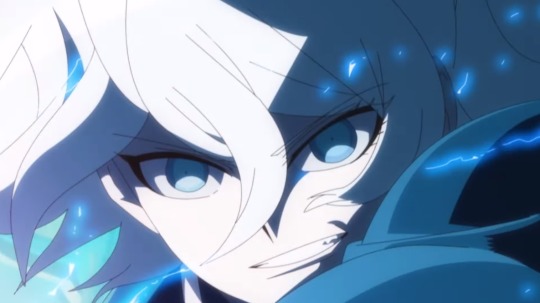
Durante una diretta streaming Akatsuki e Too Kyo Games hanno presentato il loro nuovo progetto crossmediale chiamato “Tribe Nine”, che sarà composto inizialmente da un videogioco, un webtoon e una serie anime co-prodotta da Funimation, il cui debutto è fissato per gennaio 2022.
Il soggetto originale è stato ideato da Kazutaka Kodaka, il creatore di “Danganronpa” e “Akudama Drive”. L’ambientazione è quella di un’ipotetica Tokyo del futuro, nella quale diverse bande rivali si affrontano in una versione tecnologica ed estrema del baseball.
youtube
Ecco la prima locandina ufficiale dell’anime.

I primi membri del cast confermati sono:
Haru Shirogane: Yui Horie

Shun Kamiya: Akira Ishida

Taiga: Chiharu Sawashiro
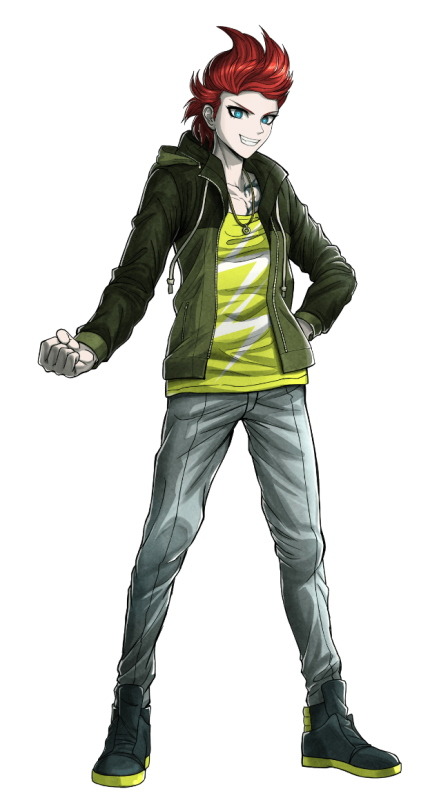
Saori Arisugawa: Mai Fuchigami
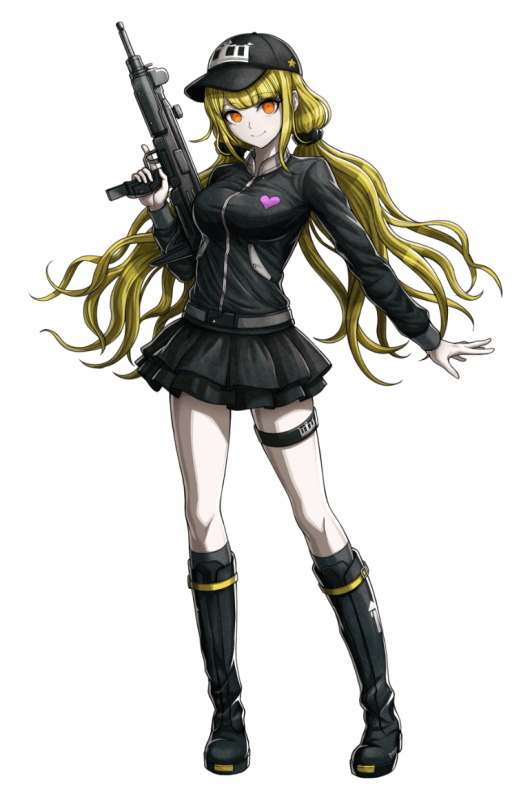
Santaro Mita: Mutsumi Tamura
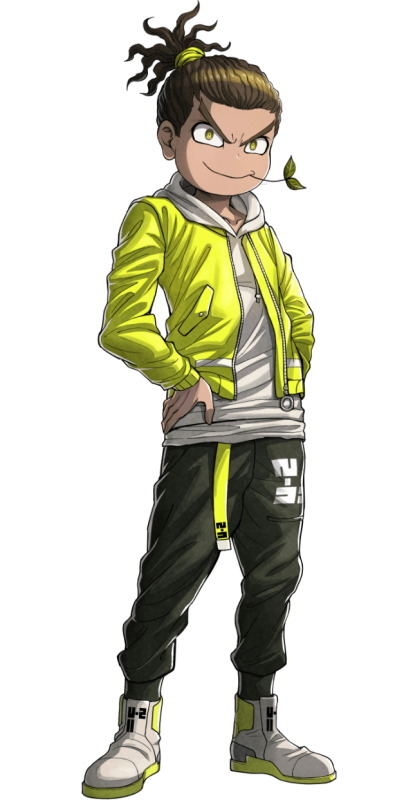
Manami Daimon: Fukushi Ochiai

Kazuki Aoyama: Shoya Chiba

Tenshin Otori: Hiroshi Naka

Ojiro Otori: Junichi Suwabe
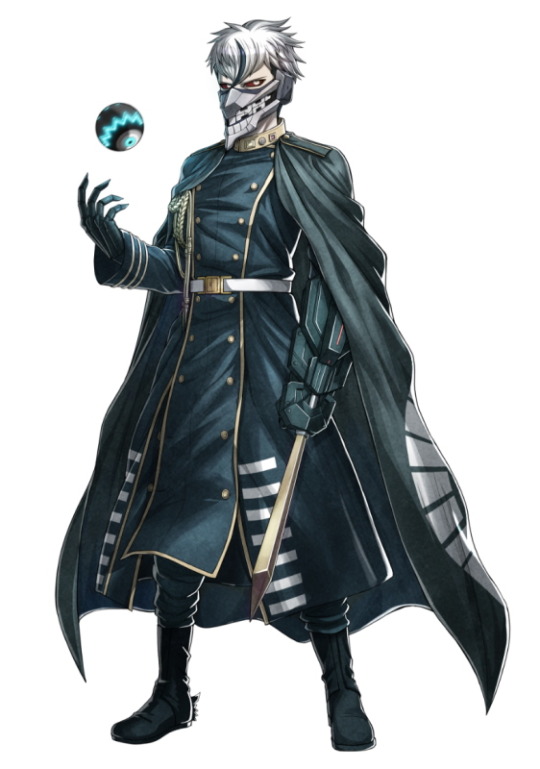
Yui Kamiki: Mikako Komatsu

In lavorazione presso lo studio LIDENFILMS (Tokyo Revengers, Cells at Work! Black), la serie è diretta da Yu Aoki e sceneggiata da Michiko Yokote (Shirobako, The Great Jahy Will Not Be Defeated!). Il character design è adattato per l’animazione da Yosuke Yabumoto (Duel Masters), mentre le musiche per la colonna sonora sono firmate da Masafumi Takada (Danganronpa).
* NON VUOI PERDERTI NEANCHE UN POST? ENTRA NEL CANALE TELEGRAM! *
youtube
Autore: SilenziO)))
[FONTE]
#tribe nine#too kyo games#anime#serie tv#videogame#newsintheshell#cartoni animati#news in the shell#animazione#giappone#funimation#webtoon
9 notes
·
View notes
Text
Tribe Nine TV Anime Takes Baseball to the Extreme in Debut Trailer

Akatsuki and Too Kyo Games' new Tribe Nine project has a few arms to it, including a game, a WEBTOON, and a TV anime adaptation. If you ever wanted to see what you would get when you mix the folks behind Danganronpa with the concept of a bunch of groups throughout Tokyo participating in extreme baseball, well, you just got your wish in the anime's first trailer.
Directed by Yu Aoki, with Michiko Yokote supervising scripts, and Yosuke Yabumoto adapting Danganronpa artist Rui Komatsuzaki's character designs at LIDEN FILMS, Tribe Nine is a Funimation co-production that's due out in January 2022. Check out the video for a taste of the over-the-top sports action to come.
youtube
Get ready for some extreme baseball like you've never seen before!
We're excited to announce that we're co-producing the anime adaptation of Tribe Nine, coming January 2022.
Find out more: https://t.co/KGE3t8ByhH pic.twitter.com/Vxnl61X7RK
— Funimation (@Funimation) September 30, 2021
Voice cast members revealed thus far include Shun Horie as Haru Shirogane, Mai Fuchigami as Saori Arisugawa, Akira Ishida as Shun Kamiya, Chiharu Sawashiro as Taiga, Mutsumi Tamura as Santaro Mita, Shoya Chiba as Kazuki Aoyama, Fukushi Ochiai as Manami Daimon, Hiroshi Naka as Tenshin Otori, Mikako Komatsu as Yui Kamiki, and Junichi Suwabe as Ojiro Otori.
You can also check out a promo for the mobile RPG, which comes from Too Kyo Games and Kazutaka Kodaka (Danganronpa, Akudama Drive).
youtube
Sources: Funimation, @tribenine_tokyo, Dengeki Online

-------
Joseph Luster is the Games and Web editor at Otaku USA Magazine. You can read his comics at subhumanzoids. Follow him on Twitter @Moldilox.
By: Joseph Luster
4 notes
·
View notes
Text
What’s In a Book? Part 29
While going through my collection I managed to find a few books that have yet to be featured on here yet. I decided to go with this one as, upon further review, I noticed that it actually contained a wealth of information that I had previously ignored ^^;

Image of book’s cover courtesy of myself.
Hana Akari: Showa Meigiren (はなあかり: 昭和名妓連) - Brilliant Flowers: The Showa Period’s Finest Geisha by Kobunshi Katsura (桂小文枝) (ISBN Unknown).
Date of Publication: 1988
Language: Japanese and English (Some Essays and Names Only)
Format: Hardcover
Availability: Can be found up for auction on a fairly regular basis
Price: Anywhere from $30 - $80
Errors: 0
This book is interesting, and that’s putting it mildly. Basically, it provides us with some of the best raw data for its time: The names of the most prominent geisha in each district of each city across all of Japan. It is a literal who’s who guide to the karyukai across the country in the late 1980s and is illuminating both in small essays that can be found at the front and back of the book explaining various schools and styles, but especially because it provides us with images, most in full color, of these amazing women.
The book overall is divided into regions which are then broken down further from there. The regions, cities, and districts of each named geisha are:
Part 1: Hokkaido (北海道)
Set 1: Asahikawa (旭川) - Kofune (小舟)
Set 2: Sapporo (札幌) - Onobu (お信), Itoko (い登子), Izumi (いづみ), and Charako (茶良子)
Set 3: Otaru (小樽) - Komomo (小桃), Mametarō (豆太郎), Kiku (㐂久), and Gorō (吾朗)
Set 4: Muroran (室蘭) - Chonko (﹅子)
Set 5: Hakodate (函館) - Nantoki (喃登希) and Kohide (小ひで)
Part 2: Tohoku (東北)
Set 1: Morioka (盛岡) - Tsutamaru (都多丸)
Set 2: Hanamaki (花巻) - Kimiko (君子) and Keiko (桂子)
Set 3: Aomori (青森) - Chame (茶目)
Set 4: Yamagata (山形) - Kochō (小蝶) and Kinta (金太)
Set 5: Akita (秋田) - Chiyogiku (千代菊)
Set 6: Obara (小原) - Ikkyū (一休), Aki (秋), and Kogiku (小菊)
Set 7: Fukushima (福島) - Sakura (さくら) and Hidemi (秀美)
Part 3: Kanto (関東)
Set 1: Takasaki (高崎) - Kiyoko (清子)
Set 2: Kusatsu (草津) - Sankoma (三駒) and Harumi (春美)
Set 3: Sarugakyo (猿ヶ京) - Kikutaro (菊太郎), Koshizu (小静)
Set 4: Minakami (水上) - Yutaka (ゆたか)
Set 5: Oyama (大山) - Kunika (くに香)
Set 6: Tokyo (東京) - Fumie (冨美江) and Wakaryū (若龍)
Set 7: Yugawara (湯河原) - Okame (お加目), Matsue (松栄), and Taeko (多恵子)
Part 4: Chubu (中部)
Set 1: Niigata (新潟) - Chiyogiku (千代菊)
Set 2: Takada (高田) - Kazuko (加津子)
Set 3: Shibata (新発田) - Renko (れん子)
Set 4: Kamidayamadatogura (上山田戸倉) - Senryū (泉竜), Suzuyakko (鈴奴), Saizō (才三), and Utamaru (歌丸)
Set 5: Kamisuwa (上諏訪) - Chiyomaru (千代丸)
Set 6: Isawa (石和) - Miki (美樹) and Koyakko (小奴)
Set 7: Kōfu (甲府) - Misako (美佐子), Kimika (君香), and Hisayo (久代)
Set 8: Inuyama (犬山) - Misako (みさ子)
Set 9: Hamamatsu (浜松) - Gonza (権三), Ichitarō (市太郎), Otomi (乙美), Koman (小萬), Eiko (栄子), Hatsutarō (初太郎), Tsuruchiyo (鶴千代), Yasuyo (泰世), Sakura (佐久良), Sachiko (幸子), Toshie (利枝), Komomo (小百々), Momoko (百々子), Fumiya (二三弥), Mitsugiku (光菊), Azuma (吾妻), Akiko (明子), and Ichiha (市羽)
Set 10: Kanazawa Higashi/East (金沢東) - Koman (小まん)
Set 11: Kanazawa Kazuemachi (金沢主計町) - Hitoha (一葉) and Kyōko (京子)
Set 12: Kanazawa Nishi/West (金沢西) - Mineko (峯子), Sachiyo (幸代), and Marichiyo (まり千代)
Set 13: Fukui (福井) - Makiko (真㐂子) and Yurako (由良子)
Set 14: Yuzawa (湯沢) - Katsumaru (勝丸) and Hiromi (弘美)
Set 15: Nagoya (名古屋) - Fukuchiyo (福千代), Takako (敬子), Tsuruko (つる子), Mitsuyo (光代), Kiku (喜久), Emiya (英美弥), Sanchō (三長), Satoyo (里代), Mitsu (未津), Ayako (あや子), Kinmaru (金丸), Naoe (直枝), Fukuwaka (福若), Hisae (比三枝), Mako (間子), Yasuko (康子), Toshino (とし乃), Koie (鯉恵), Mariko (まり子), Katsuko (かつ子), Maiko (舞子), Kingyo (金漁), Hideka (秀佳), Chiyoe (千代江), and Motoko (素子)
Part 5: Kinki (近畿)
Set 1: Osaka (大阪)
Part A: Osaka Minami (大阪南) - Yukiharu (雪春), Kikutsuru (菊つる), Kikue (菊恵), Rikimaru (力丸), Kinko (きん子), Yukiji (ゆき路), Kōjirō (廣二郎), Yoshiko (よし子), Terugiku (照菊), Midori (美登利), Hankō (はん幸), Kazumi (かず美), Yukie (ゆき恵), Yūka (勇花), Suzuka (鈴佳), Masako (まさ子), Fukuemi (福笑), Masachiyo (政千代), Kikufumi (菊二三), and Yūko (祐子).
Part B: Osaka Horie (大阪堀江) - Temari (てまり)
Part C: Osaka Shinmachi (大阪新町) - Hatsuko (はつ子) and Tamao (玉緒)
Part D: Osaka Kitashinchi (大阪北新地) - Komaka (駒香), Umesada (梅さだ), Umetomi (梅十三), Suzume (寿々女), and Umemitsu (梅充).
Set 2: Kyoto (京都)
Part A: Gion Kobu (祇園甲部) - Komame (小まめ), Hisae (久栄), Katsuyū (かつ勇), Haruyū (春勇), Miyokazu (美代一), Fukusono (フク園), Satoharu (里春), Yoshigiku (義㐂久), Kōsono (晃園), Teruha (照葉), Mamekō (まめ晃), Fukuyū (福勇), Kanoko (かの子), Machiko (真知子), Kumiko (玖見子), Kohana (子花), Takayū (孝友), Teruchiyo (照千代), Takeha (竹葉), Nakako (奈加子), Mameyū (まめ勇), Sonoko (その子), Tomichiyo (斗美千代), Yoshimame (芳豆), Kofumi (小富美), Kanoju (かの寿), Mamechiyo (豆千代), Katsufuku (かつ福), Mameji (豆爾), Toyochiyo (豊千代), Katsuji (佳つ二), Ichigiku (市季久), Mamezuru (まめ鶴), Koman (小萬), Michiko (道子), Miyokichi (美与吉), Aika (愛香), Teruyo (照代), Fumichiyo (富美千代), Kikuharu (菊春), Masuko (ます子), Momoko (桃子), Kosode (小袖), Chōji (長治), Tomigiku (冨菊), Komasu (小ます), Emiji (恵美二), Dan-e (だん栄), Koyū (小ゆう), Yukiryō (幸良), Hanachiyo (花千代), Miyuki (美ゆき), Masaru (勝), Kanoji (かの次), Hiromi (廣美), Kotomi (小とみ), and Ainosuke (愛之介).
Part B: Pontocho (先斗町) - Miyofuku (美代福), Hisakō (久幸), Raiha (来葉), Momiha (もみ葉), Ichiko (市子), Shinatomi (シナ富), Mameharu (豆治), Hisafumi (久富美), Ichisen (市扇), Mameyuki (豆幸), Umeyū (梅佑), Ichitoyo (市豊), Mameshizu (豆志津), Ichisono (市園), Mamechiyo (豆千代), Hisaroku (久ろく), Ichimitsu (市光), Momizuru (もみ鶴), Hide-e (英江), Tomizuru (富鶴), Emiju (笑寿), Fudeya (フデ哉), Miyosaku (ミヨ作), Ichihiro (市宏), and Shinateru (シナ照).
Part C: Gion Higashi (祇園東) - Toyoji (豊治), Fumie (章栄), Chika (ちか), Tsurukazu (つる和), Tsunekazu (つね和), Tsunehisa (つね久), Masuko (ます子), Toyohisa (豊寿), and Masako (満佐子).
Part D: Miyagawa Cho (宮川町) - Wakaharu (若晴). Kanae (叶恵), Fumichō (富美蝶), Mikiryū (三木竜), Wakachika (若千加), Fukukazu (ふく和), Toshiyū (敏祐), Suzuchiyo (鈴千代), Hinachō (雛蝶), Chikayoshi (千賀俊), Mieko (美恵子), Fukusome (冨久染), Tane-e (種栄), and Tanekazu (たね和).
Part E: Kamishichiken (上七軒) - Tei (てい), Emi (恵美), Katsukiyo (勝㐂代), Tamafuku (玉福), Fukuzuru (福鶴), Hisazuru (久鶴), Tsuruzō (鶴三), Hisawaka (久若), Tamaryō (玉龍), Shimeyo (〆代), Katsumaru (勝丸), Naoko (尚子), Kokimi (小㐂美), and Kohan (小はん).
Set 3: Nara (奈良) - Suzumi (須寿美)
Set 4: Genrō (彦桹) - Kikuyū (菊勇) and Masaya (政弥).
Set 5: Otsu (大津) - Omasa (おまさ)
Set 6: Kinosaki (城崎) - Tomiyū (富勇) and Kanoko (佳乃子)
Set 7: Wakayama (和歌山) - Kikuchiyo (菊千代)
Set 8: Shirahama (白浜) - Tsutagiku (蔦菊)
Set 9: Osaka Imasato (大阪今里) - Koito (小糸) and Kichihide (吉秀)
Set 10: Imasato (今里) - Kichitama (吉玉)
Set 11: Kyoto Shimabara (京都島原) - Hana Ōgi Tayū (花扇太夫)
Part 6: Chūgoku (中国) and Shikoku (四国)
Set 1: Tamatsukuri (玉造) - Naoko (尚子), Yae (八重), and Kishi (貴志).
Set 2: Okayama (岡山) - Yakko (奴) and Chizu (知寿)
Set 3: Takamatsu (高松) - Hamachiyo (浜千代)
Set 4: Matsuyama (松山) - Ippei (一平)
Set 5: Tokushima (徳島) - Fukuyo (福代) and Akiyo (明代)
Set 6: Kochi (高知) - Kimiryū (君龍) and Sadamaru (貞丸)
Part 7: Kyushu (九州)
Set 1: Hakata (博多) - Mieko (美恵子)
Set 2: Kurume (久留米) - Okiyo (お清)
Set 3: Ureshino (嬉野) - Hisamatsu (久松), Komatsu (小松), Koshin (小新), Hisaryū (久竜), and Marikō (まり幸).
Set 4: Isao (武雄) - Fumiya (文弥)
Set 5: Beppu (別府) - Mitsugiku (光菊), Fujikatsu (ふじ勝), Umesono (梅園), and Tomiko (富子)
Set 6: Kumamoto (熊本) - Ayako (あや子)
Set 7: Kagoshima (鹿児島) - Aimaru (愛丸)
The only areas that I noted are missing are some of the hot springs towns. I’m not too sure why they were skipped over, but it’s possible that the author did not have any connections to them.
The most informative part that I admit I skipped initially is the small print under each geisha’s name: their natori specialty, natori teachers, and natori names. This means that we can trace back what schools were the main specialty of each region going back decades. Since this is invaluable for anyone studying geisha over time, I’ll write in what schools were followed, but I will keep names a secret. Districts are as follows:
Part 1: Hokkaido (北海道)
Set 1 Asahikawa (旭川) - Kineya (杵屋)
Set 2: Sapporo (札幌) - Wakayagi (若柳) for dance and Tadeko (蓼胡) for song
Set 3: Otaru (小樽) - Fujima (藤間) for dance and Tadeko (蓼胡), Kineya (杵屋), Kiyomoto (清元), Shunnichi (春日), and Tokiwazu (常磐津) for song.
Set 4: Muroran (室蘭) - None Given
Set 5: Hakodate (函館) - Tanaka (田中) for dance and Matsunaga (松永) for song.
Part 2: Tohoku (東北)
Set 1: Morioka (盛岡) - Tokiwazu (常磐津) for song.
Set 2: Hanamaki (花巻) - Wakayagi (若柳) for dance and Kineya (杵屋) for song.
Set 3: Aomori (青森) - None Given.
Set 4: Yamagata (山形) - Fujima (藤間) for dance.
Set 5: Akita (秋田) - None Given.
Set 6: Obara (小原) - None Given
Set 7: Fukushima (福島) - None Given.
Part 3: Kanto (関東)
Set 1: Takasaki (高崎) - Hanayagi (花柳) for dance and Okayasu (岡安) for song.
Set 2: Kusatsu (草津) - Hanayagi (花柳) for dance.
Set 3: Sarugakyo (猿ヶ京) - Kineya (杵屋) for song.
Set 4: Minakami (水上) - Kineya (杵屋) for song.
Set 5: Oyama (大山) - Kineya (杵屋)
Set 6: Tokyo (東京) - Taguchiko (田口湖) for dance and Kineya (杵屋) for song.
Set 7: Yugawara (湯河原) - Tanaka (田中) and Fujima (藤間) for dance and Tokiwazu (常磐津), Kineya (杵屋), and Tadeai (蓼相) for song.
Part 4: Chubu (中部)
Set 1: Niigata (新潟) - None Given.
Set 2: Takada (高田) - None Given.
Set 3: Shibata (新発田) - Okayasu (岡安) for song.
Set 4: Kamidayamadatogura (上山田戸倉) - Bandō (坂東) for dance and Tōsha (藤舎), Shunnichi (春日), Kineya (杵屋), and Kiyomoto (清元) for song.
Set 5: Kamisuwa (上諏訪) - Kineya (杵屋) for song.
Set 6: Isawa (石和) - Hanayagi (花柳) for dance and Mochizuki (望月) for song.
Set 7: Kōfu (甲府) - Hanayagi (花柳) for dance and Kiyomoto (清元), Okayasu (岡安), and Nagami (長巳) for song.
Set 8: Inuyama (犬山) - Nishikawa (西川) for dance and Kineya (杵屋) for song.
Set 9: Hamamatsu (浜松) - Fujima (藤間) and Fukuwara (福原) for dance and Kiyomoto (清元), Yoshimura (芳村), Shunnichi (春日), Nishikiharu (錦春), and Tokiwazu (常磐津) for song.
Set 10: Kanazawa East (金沢東) - Kamizaki (神崎) for dance.
Set 11: Kanazawa Kazuemachi (金沢主計町) - Fujima (藤間) for dance and Kineya (杵屋) and Mochizuki (望月) for song.
Set 12: Kanazawa Nishi/West (金沢西) - Nishikawa (西川) for dance and Tōsha (藤舎), Okayasu (岡安), and Kashida (堅田) for song.
Set 13: Fukui (福井) - Fujima (藤間) for dance and Utazawa (哥沢) for song.
Set 14: Yuzawa (湯沢) - None Given.
Set 15: Nagoya (名古屋) - Nishikawa (西川) for dance and Kiyomoto (清元), Tokiwazu (常磐津), Sumida (住田), Kineya (杵屋), Kishizawa (岸沢), Shunnichi (春日), and Fujimatsu (ふじ松) for song.
Part 5: Kinki (近畿)
Set 1: Osaka (大阪)
Part A: Osaka Minami (大阪南) - Onoe (尾上), Fujima (藤間), Bandō (坂東), and Hanayagi (花柳) for dance and Kiyomoto (清元), Kondo (今藤), Mochizuki (望月) and Tokiwazu (常磐津) for song.
Part B: Osaka Horie (大阪堀江) - Nishikawa (西川) for dance.
Part C: Osaka Shinmachi (大阪新町) - Nishikawa (西川) for dance and Kineya (杵屋), Shunnichi (春日), and Ogie (荻江) for song.
Part D: Osaka Kitashinchi (大阪北新地) - Nishikawa (西川) and Hanayagi (花柳) for dance and Kineya (杵屋), Tamura (田村), Uji (宇治), Tokiwazu (常磐津), Tagawa (田川), Kiyomoto (清元), and Yoshimura (吉村) for song.
Set 2: Kyoto (京都)
Part A: Gion Kobu (祇園甲部) - Inoue (井上) for dance.
Part B: Pontocho (先斗町) - Onoe (尾上), Nishikawa (西川), and Wakayagi (若柳) for dance and Tōsha (藤舎), Kondo (今藤), Nakamura (中村), Ogie (荻江), Bungo (豊後), Kineya (杵屋), and Tokiwazu (常磐津) for song.
Part C: Gion Higashi (祇園東) - Fujima (藤間) for dance and Tokiwazu (常磐津), Yanagi (柳), Nakamura (中村), Kineya (杵屋), and Tōsha (藤舎) for song.
Part D: Miyagawa Cho (宮川町) - Umemoto (楳茂都), Wakayagi (若柳), and Rokugō (六鄕) for dance and Kondo (今藤), Bungo (豊後), Kiyomoto (清元), Yanagi (柳), Yamakishi (山岸), Utazawa (哥沢), Tadeko (蓼胡), and Umeya (梅屋) for song.
Part E: Kamishichiken (上七軒) - Hanayagi (花柳) for dance and Tokiwazu (常磐津), Shunnichi (春日), Toyomoto (豊本), Kiyomoto (清元), Tōsha (藤舎), and Kiyoyuki (清之) for song.
Set 3: Nara (奈良) - Kineya (杵屋) for song.
Set 4: Hikone (彦桹) - None Given.
Set 5: Otsu (大津) - Yanagi (柳) for song.
Set 6: Kinosaki (城崎) - Wakayagi (若柳) and Onoe (尾上) for dance.
Set 7: Wakayama (和歌山) - Onoe (尾上) for dance.
Set 8: Shirahama (白浜) - Okayasu (岡安) for song.
Set 9: Osaka Imasato (大阪今里) - Kineya (杵屋), Shunnichi (春日), and Kiyomoto (清元) for song.
Set 10: Imasato (今里) - None Given.
Set 11: Kyoto Shimabara (京都島原) - None Given.
Part 6: Chūgoku (中国) and Shikoku (四国)
Set 1: Tamatsukuri (玉造) - Fujima (藤間) for dance and Kineya (杵屋) for song.
Set 2: Okayama (岡山) - Onishi (小西) for dance.
Set 3: Takamatsu (高松) - Kiyomoto (清元) for song.
Set 4: Matsuyama (松山) - Kiyomoto (清元) and Tamura (田村) for song.
Set 5: Tokushima (徳島) - Yoshitō (芳膛) for dance and Kiyomoto (清元) and Tamura (田村) for song.
Set 6: Kochi (高知) - Kiyomoto (清元) and Tamura (田村) for song.
Part 7: Kyushu (九州)
Set 1: Hakata (博多) - Kondo (今藤), Shunnichi (春日), and Kashida (堅田) for song.
Set 2: Kurume (久留米) - Tokiwazu and Shunnichi (春日) for song.
Set 3: Ureshino (嬉野) - Hanayagi (花柳) and Fujima (藤間) for dance and Matsunaga (松永) and Tagoto (田毎) for song.
Set 4: Isao (武雄) - Fujima (藤間) for dance.
Set 5: Beppu (別府) - Tokiwazu (常磐津), Kiyomoto (清元), and Hisago (瓢) for song.
Set 6: Kumamoto (熊本) - Hanayagi (花柳) for dance and Kondo (今藤) for song.
Set 7: Kagoshima (鹿児島) - Kineya (杵屋) and Tagoto (田毎) for song.
The reason why this book has no ISBN is because it was self published. The original cover price was ¥30,000, which is almost $300 USD. This price was likely set due to the vast amount of research done, including acquiring the many photographs, and printing costs. This price was also likely due to it being targeted at serious karyukai connoisseurs as that price in the 1980s would have been much higher now due to inflation. Nowadays you don’t have to pay as much for this book as most Japanese sellers see it as outdated and it can be found quite regularly on Japanese retail sites, such as Yahoo Japan Auctions or Rakuten.
The only “errors: that I could find were some spelling issues, but that’s because they’re using the Japanese way of writing Romaji and not the Hepburn System. So, I’m not counting them as errors, but rather just making note of them to anyone who purchases this book.
Rating: ✪✪✪✪ (out of 5)
35 notes
·
View notes
Video
youtube
A second PV for the TV anime “Midara na Ao-chan wa Benkyou ga Dekinai” (Ao-chan Can’t Study!) is now currently streaming. It features the opening theme by Edoga-Sullivan. Broadcast starts April 5th.
-Synopsis-
“When Ao was in kindergarten, she smiled ear-to-ear as she told her classmates how her father, a bestselling erotic author, chose her name: “A as in apple and O as in orgy!” That day still haunts her ten years later as she studies with a single goal in mind: to get into an elite university and achieve independence from her father once and for all. She has no youth to misspend and no time to think about boys…until her classmate, “King Normie” Kijima, approaches her with a shocking confession of love. She tries to lose Kijima, but he just can’t take a hint…and as her mind runs wild with dirty thoughts, she realizes her father has totally influenced her!”
-Staff-
Director: Keisuke Inoue
Series Composition: Michiko Yokote
Character Design: Miwa Ooshima
Studio: SILVER LINK
-Cast-
Ao Horie (CV: Azumi Waki)
Kijima (CV: Junta Terashima)
Hanasaki Horie (CV: Kenjiro Tsuda)
Juri Kimura
Takashi Kondou
Yusuke Shirai
Toshinari Fukamachi
via: http://aochan-anime.com/
33 notes
·
View notes
Text
Kousei Tomita is reprising his role of Danbei for Cutie Honey Universe. This is extremely cool news. Not only was he the original voice of Danbei back in ‘73, but he’s voiced Danbei in everything up to Cutey Honey F. I was always upset he wasn’t in F, but this kind of erases that sin.
Katsuji Mori, who played Seiji in the original series, is apparently voicing Dr. Kisaragi. Yui Horie, who played Honey in Re: Cutie Honey, will be playing Natsuko. Here’s hoping they get more of the older actors to play roles. I’d love the other Honeys (Eiko Masuyama, Ai Nagano, Michiko Neya) to have some minor roles.
12 notes
·
View notes
Text
Voice claims I've got in Japanese for my ocs are
Jordan - Michiko Neya
Trisha - Ai Nagano
Dolce - Maaya Sakamoto
Uva - Yui Horie
And then in english all I have is Uva and she sounds like something in between this and this
1 note
·
View note
Text
An Autumn Afternoon (秋刀魚の味 Sanma no aji) - 1961
The last feature film of Ozu is arguably one of the most impressive works of him. The main theme of relationships between widowed father and his daughter is raised once again as in Late Spring, yet the other motifs are present here in abundance making An Autumn Afternoon almost as complex as Tokyo Story.

We are back to Tokyo where all the scenes of family life are shot in a very minimalistic way. These are the same bars where characters drink or dine (Luna bar once again!), the same office space, the same houses. Tatami-shots are quintessential for the visual part once again, just like in Higanbana. The camera doesn't move too much, being focused on the characters while they talk looking straight on us. The protagonists and their stories and struggles are also familiar for those who are into Ozu’s films, yet again and again, we see something additional, deep and complicated.
Throughout his career, Yasujiro Ozu has been always trying to capture the changes in Japanese society. Sometimes, these things are shown in very serious tones such as changing social conduct in Japan based on Late Spring themes. In the other case, he takes it with humour and irony as in comedy Good Morning, which shows a TV that children dream about as the symbolic representation of the West emerging in the Japanese culture and indicating intense changes. In An Autumn Afternoon, Ozu’s protagonist Hirayama (played by Chishu Ryu) is a former battleship’s commander during The II World Was, now a simple working widowed man with three children. Hirayama looks around himself in Tokyo during the strolls, and we witness how massive the changes of the 1960-s are. The world is way too different, and Japan has overcome the consequences of war. The country’s economic system was in a poor condition, while the whole districts of biggest cities were in ruins. In 1962, Japanese capital is shown on the screen as the city with immense development. It is very colourful, modern and staffed with billboards. Hirayama meets a former comrade-in-arms in the bar, and they hardly recognize each other. As the war is behind, they turned into simple men who live for the future of their families. They talk about war and the implication of Japan's surrender, and we can see nothing but the bitterness of the war they were forced to go to. They don’t come up with any fanatical statements about the loss and even say it could be even beneficial that Japan lost, for some reasons. It is implied, Hiroyama has lost his wife during the war. Showing these simple men talking about the past in this light while Japan is changing so fast is a great notice and motif of Ozu’s last work.

As the country and culture change, family values remain the same. Japan is always shown in the films of Ozu as the society based on strong family bonds. As it has been already mentioned, the main motif of the film follows Late Spring – a widower raised the daughter, and she is now 24 years old. The time for her marriage is coming, but father and daughter have developed strong dependence on each other, they are attached to each other too much to imagine they have to split the ways. Hiroyama is a loving and caring father, and his daughter Michiko (Shima Iwashita) is everything to him: a friend, a wife, an object for admiration, a reason for living. The wise friends of Hiroyama tell him he should start thinking of her marriage before it’s too late, but he dismisses these talks saying she is too young.
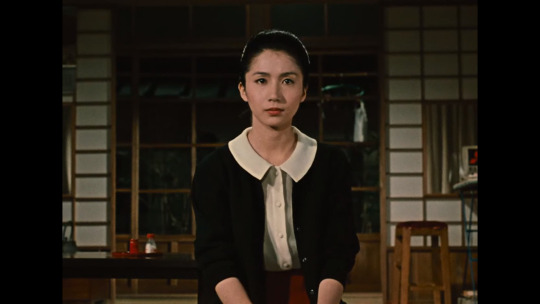
His mind changes as he encounters the former school teacher on a meeting of classmates. The teacher is already old, and his daughter never married because she decided to look after him. He states he is so lonely, despite the fact the daughter said with him. He is deeply saddened by the fact she has lived the entire life with him, and we see them in some sort of sad union where the father’s life is filled with grief because of daughter’s fate. The teacher drinks too much, and later we see him at the house where the daughter is present. She breaks into tears sitting next to him when he is drunk, and it is showing how lonely both of them are.
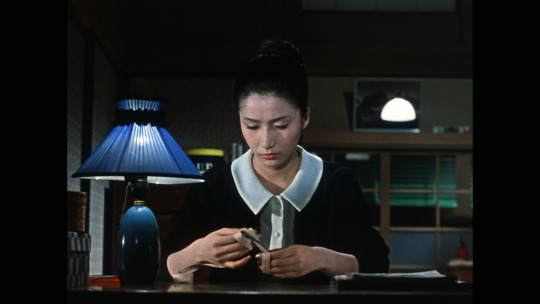
These events have impressed Hiroyama patriarch greatly, so he is in a rush to find a decent man for Michiko. The situation is getting more complicated as he learns that his daughter is in love with a young man while that guy had already made up his mind to marry another woman. With the help of school friends, they find the way through. The film ends just like Late Spring: Michiko leaves her house. Her father is both happy and devastated by the heart-breaking loss. We see the empty rooms of his house, the staircase and old Hiroyama in rumination sitting alone in the kitchen. This is the most touching moment of An Autumn Afternoon, along with the scene when Michiko learns that man she loved is already engaged, and her father wants her to marry another man.

As another layer of story, An Autumn Afternoon shows the oldest son of Hiroyama Koichi (Keiji Sada) living with his wife Akiko (one more fantastic role of Mariko Okada in Ozu’s films who recently appeared in Akibiyori as the real sparking star of the movie). A lot of curious and important shots from their joint life are shown by Ozu. This part of the plot is also interesting to follow as it accompanies the main motifs very well. However, patriarch Hiroyama seems to be more attached to his daughter, rather than to his two sons. This thing is also very distinctive for Ozu’s films: the deep and beautiful relations between are father and daughter are marvelous in the way he shows it.

And there is much more than that. Another sub-plot discloses the friendship between old school friends and show their concerns and a different attitude. One of them named Horie (Ryuji Kita) after becoming widower has just married a woman who is three years older than his daughter. Seeing him in love with such a young girl, his friends might be a little jealous at some point, but end up seeing he is also quite lonely. Hiroyama and his other friend Kawai (Nobuo Nakamura) are more concerned about their own kids and their happiness, while Horie is shown as an egoistic kid himself. Ozu pays a lot of attention to their talks and meetings, as well as to the time they spend with their old teacher nicknamed "The Gourd". It is essential for An Autumn Afternoon, as Ozu attempts many different sides of the everyday life of simple Japanese families.
It is worth mentioning that Shima Iwashita’s acting performance is stellar. Appearing as the bride in typical for Ozu ellipsis, she shines with her modest beauty and elegance. She delivers a great performance being able to show her deep love to her father, a strong intention to stay with him and eventual submission to both father and the life flow. She doesn’t break the harmony of the traditional Japanese family values. She is similar to Noriko from Late Spring in this regard, though the character of Michiko can’t be compared to Noriko. In Late Spring, the heroine played by Setsuko Hara (whose last Ozu's role was The End of Summer) became the most elaborate female character of Ozu’s films who had developed the set of unique personal qualities and demonstrated an endless depth of peculiarities of father-daughter relationships.

Unlike Late Spring, An Autumn Afternoon is not so much concentrated on one female protagonist. It is a very comprehensive and complex feature film of Ozu which remained a vivacious last element of his vision of the family life and dramas he has been showing on the screen for more than three decades.
#an autumn afternoon#秋刀魚の味#ozu#yasujiro ozu#小津 安二郎#chishu ryu#shima iwashita#篠田 志麻#mariko okada#岡田 茉莉子
1 note
·
View note
Text
Three Cast Members Announced for the Ao-chan Can't Study Anime
Three Cast Members Announced for the Ao-chan Can’t Study Anime
Three cast members have been announced for the forthcoming anime adaptation of the Ao-chan Can’t Study manga:
Azumi Waki is Ao Horie
Junta Terashima is Takumi Kijima
Kenjiro Tsuda is Kasaki Horie
Keisuke Inoue is directing the anime at SILVER LINK. Michiko Yokote is in charge of series scripts. Miwa Oshima is designing the characters.
Ao-chan Can’t Studyis scheduled to premiere in Japan in April…
View On WordPress
0 notes
Photo


“Midara na Ao-chan wa Benkyou ga Dekinai”
Serie TV anime, aprile 2019
Serie animata tratta dal manga “Midara na Ao-chan wa Benkyou ga Dekinai” (Ao-chan Can't Study!) di Haruka Kanda.
youtube
-STAFF-
Regia: Keisuke Inoue
Studio di animazione: SILVER LINK.
Sceneggiatura: Michiko Yokote
Character design: Miwa Oshima
-CAST-
Ao Horie: Azumi Waki

Takumi Kijima: Junta Terashima

Hanasaki Horie: Kenjirou Tsuda

Miyabi Takaoka: Juri Kimura

Souichirou Yabe: Takashi Kondou

Masaki Uehara: Yuusuke Shirai

Shuuhei Yonezuka: Toshinari Fukamachi

Il ricordo di aver rivelato candidamente a tutti i compagni di classe di quando andava all’asilo, che la “O” nel suo nome stava per “orgia” a quanto detto da suo padre, un famoso autore di opere erotiche, tormenta Ao ancora oggi dopo dieci anni. La giovane non fa che immergersi nello studio, con un solo obiettivo: entrare in una rinomata università e raggiungere l’indipendenza, in modo da separarsi il più possibile dal padre. Non ha tempo per altro, fino a che un suo compagno di classe le confessa di essere innamorato di lei. Ao cerca di farlo desistere, ma il padre l’ha influenzata più di quanto pensasse e la ragazza si ritrova spesso a fantasticare cose sconce!
La commedia romantica viene serializzata sulle pagine di Shounen Magazine Edge dall’ottobre del 2015 e ad ora conta 7 volumi pubblicati in Giappone.
Sito ufficiale
Twitter ufficiale
SilenziO)))
#romcom#anime#serie tv#manga#midara na ao-chan wa benkyou ga dekinai#ao-chan can't study!#primavera 2019#newsintheshell#news in the shell
1 note
·
View note
Text
TV Anime adaptation of manga "Midara na Ao-chan wa Benkyou ga Dekinai" (Ao-chan Can't Study!) announced!
Key visual and staff revealed!
<Staff>
Studio: Silver Link
Director: Keisuke Inoue (Sunohara-sou no Kanrinin-san)
Series Compostion: Michiko Yokote (Genshiken)
Character Design: Miwa Ooshima (Baka to Test to Shoukanjuu)

Synopsis:
Ao Horie has decided to throw away her youth in order to attend a top university and travel far away. She has no time for boys or the desires of youth. The problem with her plan is that her father is an ero author, and her upbringing is a bit twisted. There's a guy in her class that she needs to reject but she is discovering that, as a tsundere, setting aside her feelings is not easily done and leads to inadvertent ecchi comedy. (via mangaupdates)
src: https://natalie.mu/comic/news/310660
0 notes